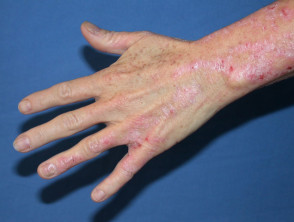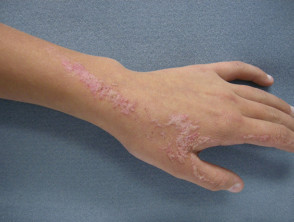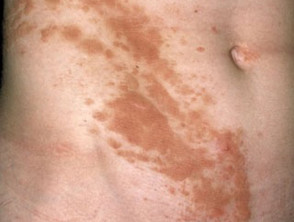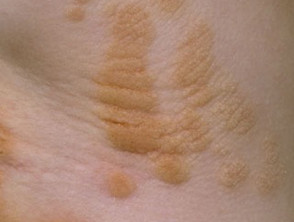What is an inflammatory linear verrucous epidermal naevus?
An inflammatory linear verrucous epidermal naevus (ILVEN) is a special kind of epidermal naevus. Epidermal naevi are birthmarks due to an overgrowth of the epidermis (upper layers of the skin).
What causes ILVEN?
The abnormality resulting in ILVEN arises from a defect in the ectoderm. This is the outer layer of the embryo that gives rise to epidermis and neural tissue. The defect causing the skin lesions may also result in disorders of other internal organs such as the brain, eyes and skeleton. This is extremely rare with ILVEN.
Who gets ILVEN?
ILVEN may be present at birth, but usually arises during the first 5 years of life and spreads over months or years. It is somewhat more common in females than in males and occurs in all races.
What are the clinical features of ILVEN
Like other linear epidermal naevi, ILVEN is characterised by warty lesions that tend to group together in a linear pattern. The difference is that the lesions are red, inflamed and itchy, sometimes intensely so. The surface of the lesions may look like eczema (dry, red, scratched) or like psoriasis (red and scaly).
ILVEN most often affects one leg and may extend from the buttock to the foot.
ILVEN
How is ILVEN diagnosed?
ILVEN is diagnosed by careful history and physical examination. A skin biopsy can be helpful and may show the characteristic histological features of ILVEN.
What is the treatment of ILVEN?
No curative treatment is available for ILVEN. Emollients and low potency topical steroids can relieve the itching. Emollients or topical calcipotriol may relieve the dryness.



